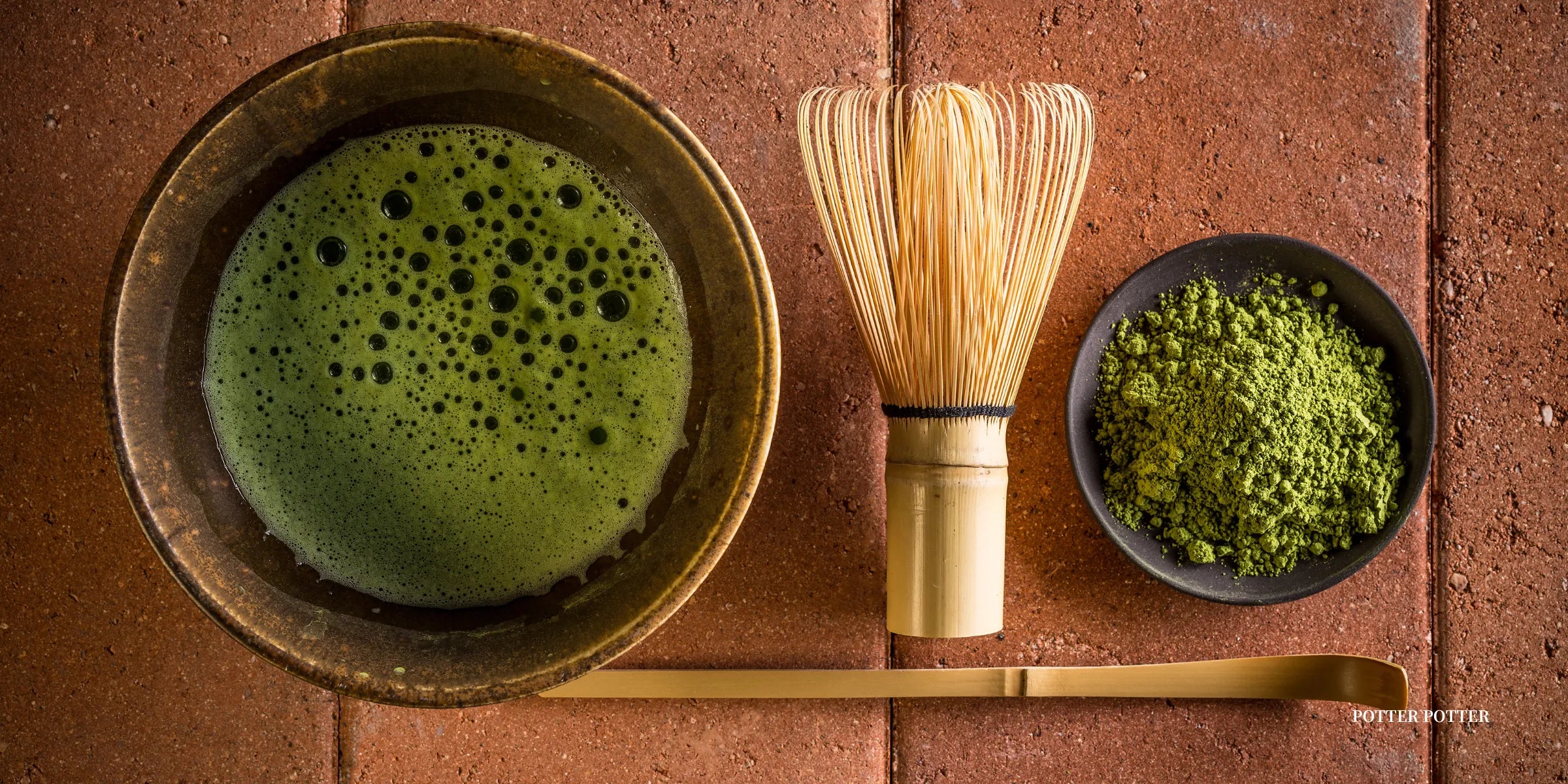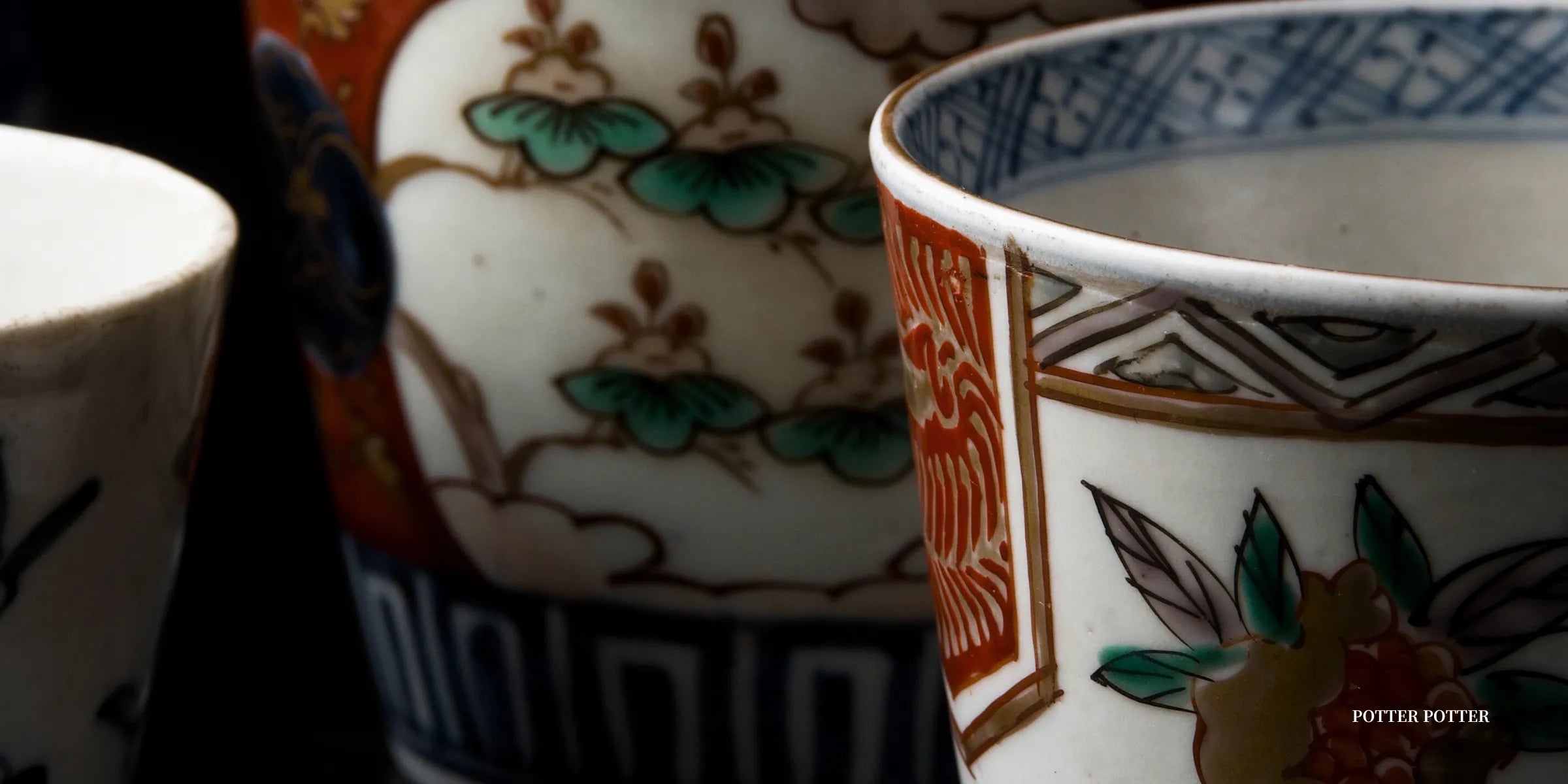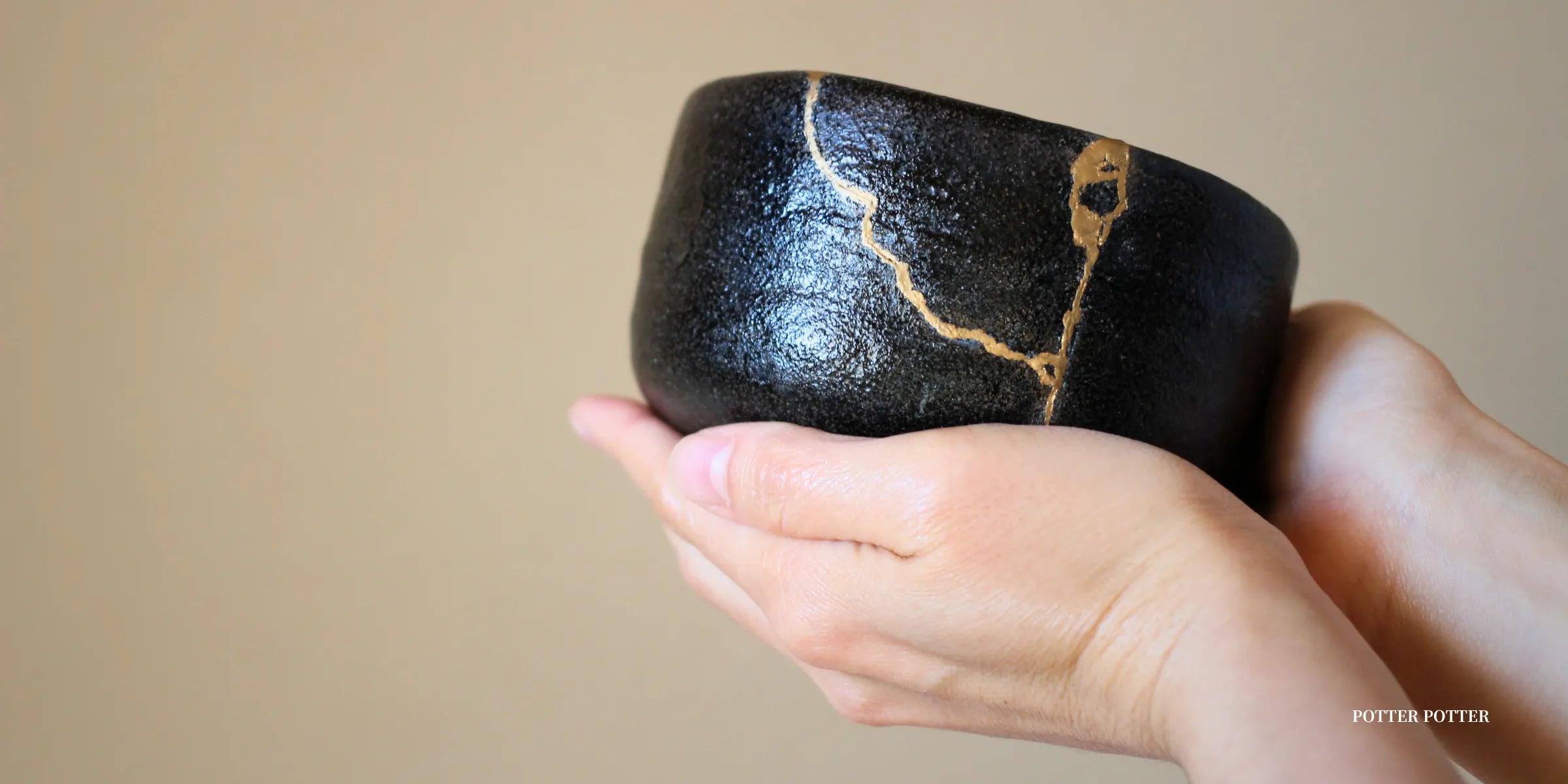
The Role of Pottery in Japanese Tea Ceremonies
What makes the Japanese tea ceremony so profoundly unique? Is it the ritual itself, the tea, or the carefully selected pottery used in the process? In Japanese tea ceremonies, pottery plays a crucial role, not just as a tool but as an embodiment of cultural and spiritual values.

|
Table of Contents |
Understanding Tea Ceramics: More Than Just Utensils

Tea ceramics, known as “茶陶” (chatou), refer to the pottery and utensils used in the Japanese tea ceremony. While the tea bowl (茶碗) is the most commonly recognized item, the tea ceremony involves an array of utensils. These include the water jar (水指) for pure water, the tea caddy (茶入) for storing matcha, and the waste water bowl (建水) for disposing of used water. Many utensils, like the bamboo tea scoop (茶杓) and tea whisk (茶筅), are not even made of pottery. Additionally, iron kettles (釜) used for boiling water highlight the diverse materials involved in the ceremony.
The significance of tea ceramics extends beyond their practical use. Historically, tea ceremonies have deep roots in Zen Buddhism, as emphasized by Sen no Rikyu, a prominent tea master and “tea saint.” He believed that the practice of tea was inherently connected to Buddhist teachings, serving as a path to enlightenment. Rikyu and other tea masters guided warlords and samurai of the time, who revered tea ceremonies not merely as an art form but as a way to cultivate their spirit.
The tea ceremony evolved during the Muromachi period, drawing influences from Chinese Song Dynasty practices and incorporating Zen Buddhist principles. In this cultural context, the pottery used in tea ceremonies became a symbol of spiritual and aesthetic values, embodying a blend of simplicity, humility, and an appreciation for natural beauty.
The Aesthetic Philosophy of Japanese Pottery in Tea Ceremonies

The creation of tea ceramics is guided by the tea ceremony’s core principles, rooted in the Zen Buddhist philosophy of “和敬清寂” (Harmony, Respect, Purity, and Tranquility). The most crucial aspect of crafting tea utensils is aligning them with the spirit of the tea ceremony. The pottery should not seek individual beauty or technical perfection like other art forms. Instead, it should aim to fulfill its role as a “supporting actor,” complementing the main elements of the ceremony.
Take, for example, the flower vase used in the tea room. Its purpose is not to draw attention to itself but to enhance the beauty of the flowers it holds. If the vase overshadows the flowers, it fails as a tea utensil. In this context, tea ceramics embody the idea of “和” (Harmony), supporting the ceremony’s ambiance and facilitating a deeper connection between participants.
Tea bowls (茶碗) are perhaps the most celebrated tea ceramics. They must be simple yet elegant, embodying a balance of function and form. Tea masters have always been mindful of their selection of bowls, often choosing pieces that reflect the changing seasons or the specific atmosphere they wish to create. The tea bowl is not just a vessel; it is a manifestation of the tea master’s intention, an expression of mindfulness, and a medium through which the spirit of “侘び寂び” (wabi-sabi) is communicated.
“侘び寂び,” a key aesthetic in Japanese culture, celebrates the beauty found in imperfection, impermanence, and simplicity. In the tea ceremony, this is evident in the preference for pottery that may have asymmetrical shapes, muted colors, and a rustic charm. These characteristics signify an acceptance of nature’s flaws and an appreciation for the natural aging process, emphasizing that beauty lies not in flawlessness but in authenticity.
Evolution of Japanese Tea Ceramics: From Chinese Influence to Japanese Innovation

Initially, Chinese porcelain dominated Japanese tea ceramics. During the Muromachi period, the finest tea utensils were imported from China, with their intricate designs and flawless craftsmanship. However, the rise of “侘び茶” (wabi-cha) in the late Muromachi period shifted preferences toward Korean and local Japanese pottery. This change was driven by tea masters like Sen no Rikyu, who sought a more humble and austere aesthetic.
In the Momoyama period (late 16th century), Japan saw the emergence of its unique styles of tea ceramics. The collaboration between tea masters and skilled potters led to the creation of various iconic styles. These included Karatsu ware from Kyushu, known for its simple yet refined appearance, and Mino ware from the Mino region, famous for its Shino, Oribe, and Seto styles. These ceramics embodied the spirit of “侘び寂び,” with their unglazed surfaces, irregular shapes, and understated elegance.
The influence of Korean pottery was also significant during this time. Korean potters, brought to Japan by warlords, contributed their expertise to the development of Japanese tea ceramics. Their work was often rough and natural, aligning perfectly with the aesthetic ideals of “侘び寂び.” Pieces such as the “Chawan” (tea bowls) became highly prized for their unpretentious beauty.
The Edo period witnessed further refinement of tea ceramics. While new techniques and styles continued to emerge, the philosophy remained the same: the pottery used in the tea ceremony must serve the ritual’s purpose. It must reflect the tea master’s mindfulness, the participant’s respect, and the host’s desire to create a moment of tranquility.
The End.
The tea ceremony’s emphasis on simplicity, naturalness, and spiritual reflection has cemented the role of pottery as an integral part of this cultural practice. Japanese tea ceramics are not just objects; they are embodiments of the tea ceremony’s profound philosophy. They teach us that beauty lies in imperfection, that utility and artistry can coexist, and that the essence of hospitality is found in the harmony of elements.
To truly appreciate the tea ceremony, one must delve into the world of tea ceramics. When selecting or using tea ceramics, consider the principles of the tea ceremony. Choose pieces that embody simplicity, respect for nature, and a sense of timeless beauty. By doing so, you embrace not only the art of tea but also a way of life that cherishes mindfulness, harmony, and the pursuit of spiritual growth.
This article introduces the significance of pottery in Japanese tea ceremonies, exploring its philosophical roots and aesthetic principles. By understanding the role of tea ceramics, we gain insight into the deeper values that have shaped Japanese culture for centuries.

